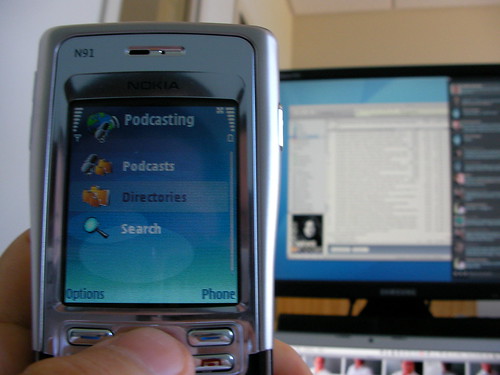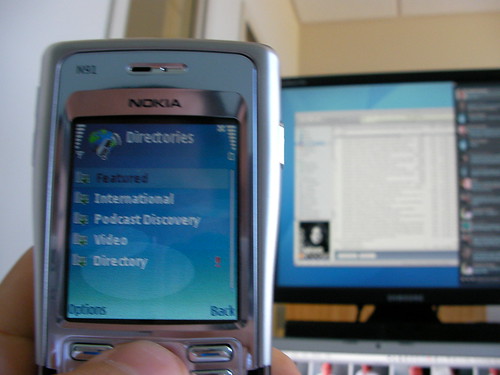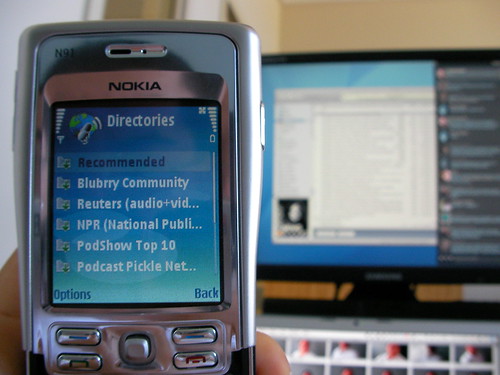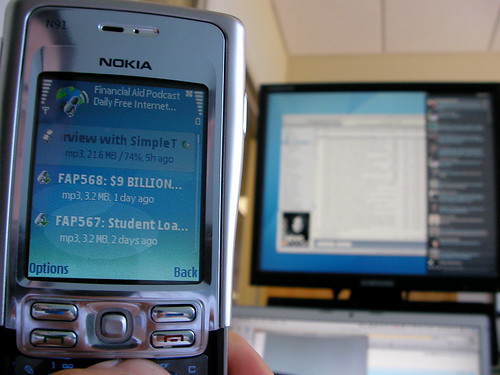The Podcast Awards must be happening. In the past 24 hours, I’ve gotten 12 emails, over 40 bulletins on MySpace, and on virtually every other channel you can reach out to your audience with, I’ve had fellow podcasters begging, pleading, and pimping for votes for the 2007 Podcast Awards.
Now, don’t get me wrong. If my day job podcast, the Financial Aid Podcast, were to win an award, cool. More stuff for the resume, etc. As a prize, you know what I would want?
A PR Newswire US ENT-N1 press release, a promo on every nominated show, AND $500 in Google Adwords credits that I could use to build new audience. Here’s the thing I don’t like about the Podcast Awards – and believe me, it’s no dig on Todd Cochrane or the Podcast Connect folks, who do a great job with the awards – but the Podcast Awards are a fishbowl decoration.
What do I mean? To quote PodCamp co-founder and partner Chris Brogan, they’re an internal thing to the podcasting community, news inside the fishbowl, inside the echo chamber. Show the award to anyone deep inside the podcasting community, and they’ll know of it at the least (particularly if they’re friends of the winner on MySpace and got the same bulletin 6 times in 30 minutes). Show the award to the average passerby on Fifth Avenue or Ghirardelli Square or Faneuil Hall, and they’ll look at you very, very blankly, and probably mutter something polite as they run away from you.
What would be cool is if the Podcast Awards, or an award like it, had some of the values that I think are so essential to new media built right into them, the same values we try to build into PodCamp – transparency, openness, and most of all, outreach to people who are just getting into podcasting or are thinking about jumping in. What would that look like?
Well, for starters, nominees would need to provide a data set to the awards committee – statistics for a minimum of 3 months from two different, unaffiliated data sources. They could be Libsyn stats combined with Feedburner numbers, or Blubrry info combined with Podshow PDN info, or Apache weblogs and Kiptronic data. Whatever the numbers are you’d submit as an award participant, you’d agree to have them published publicly, because transparency is the key to fairness.
What would the judges be looking for?
– Largest audience. That’s a good metric. Measure a 30 day running average based on downloads per unique IP address.
– Most improved audience. A show that went from 10 listeners/viewers to 10,000 listeners in 3 months would be a huge gain. Again, downloads per unique IP address.
– Most diverse audience. Take a look at your web logs. I’d bet you that you don’t have a giant long tail of referrers in it. Suppose a show had referring site links – inbound links – from over 10,000 different web sites? That’d be some definite outreach (for the record, Bum Rush the Charts had about 13,000 referring sites at peak).
– One subjective award to the person or persons who’ve done the most to bring in new listeners to the podcasting community – not to your show, but to podcasting in general.
As part of the award acceptance, the winners would need to provide details on how they achieved their accomplishments, and suggestions for others to help them grow their audiences, too.
Podcasting is practically self-selling – free, legal music, infinite choice in subject matter (and quality), unique perspectives on issues, and everything under the sun. More variety than Clear Channel’s swill, and it keeps the ol’ iPod fresh instead of shuffling the same library over and over again. However, podcasting needs to get people involved into at least one show – and then the listener will likely get curious about what ELSE is available. But you have to get them exposed to that one show first.
Outreach. Distribution. These are what podcasting is missing right now in a systematic fashion, and these are our Dip (Seth Godin, thank you) that we must overcome in order to make this podcasting phenomenon more than a passing fad.
So what do you say? Should we have the Podcasting Outreach Awards?






